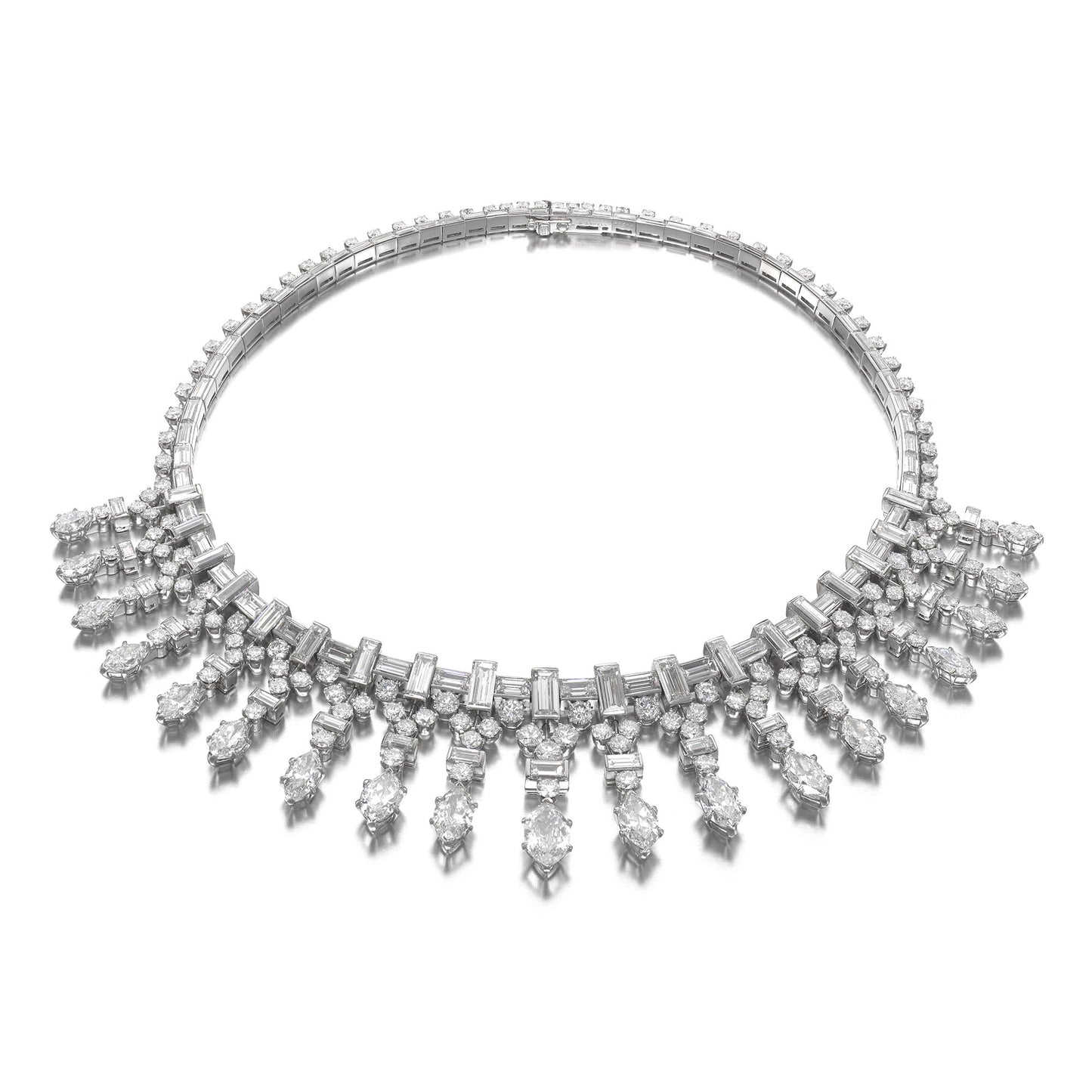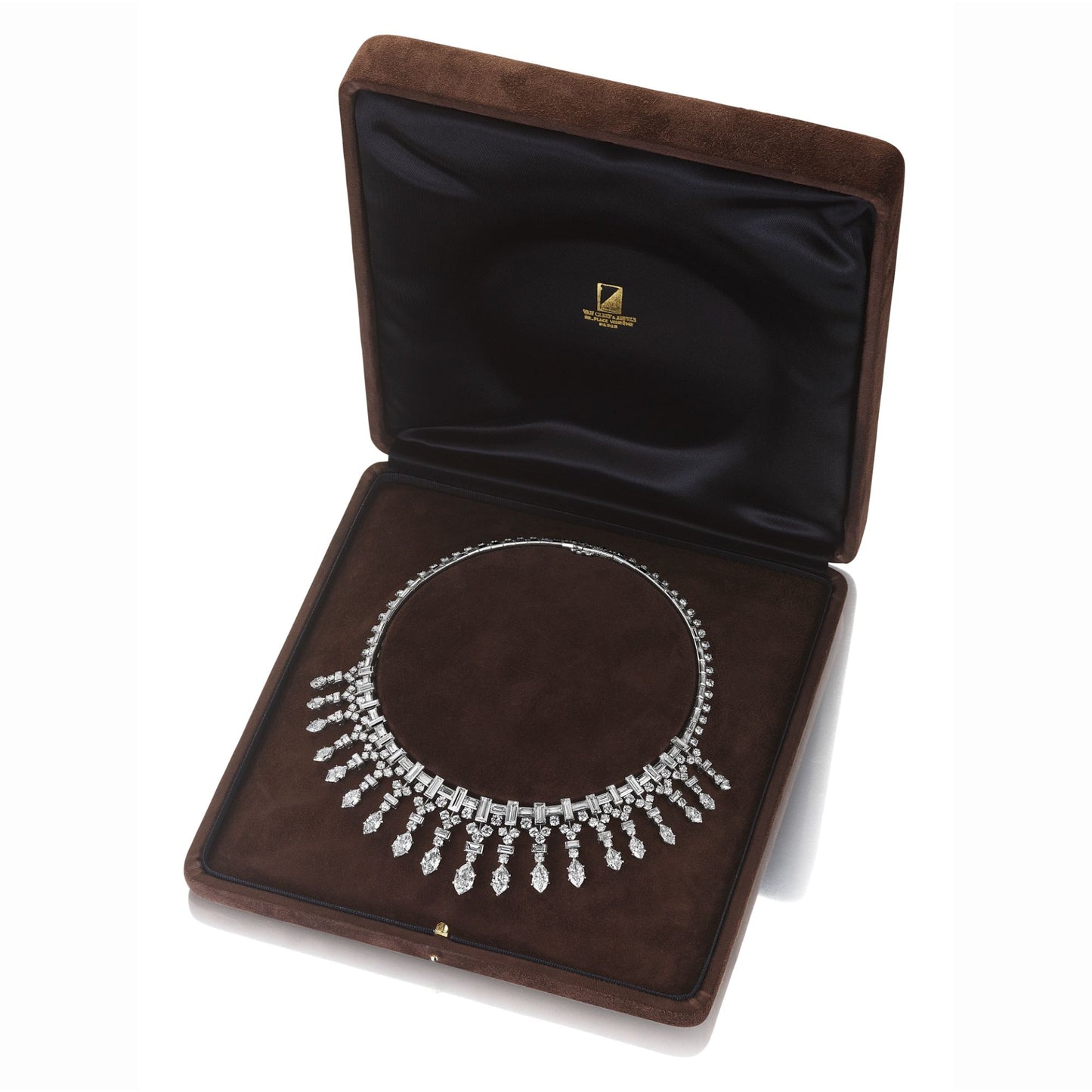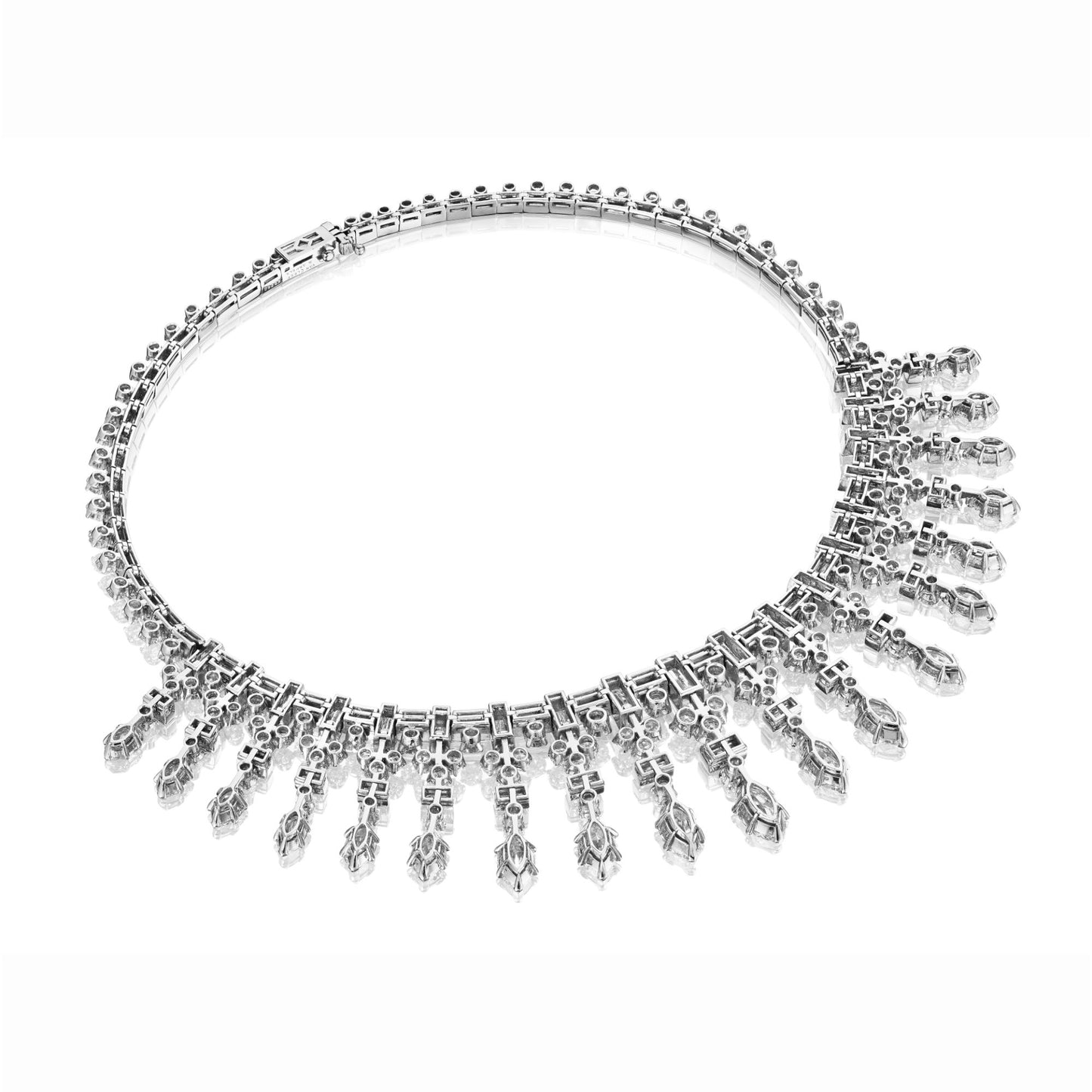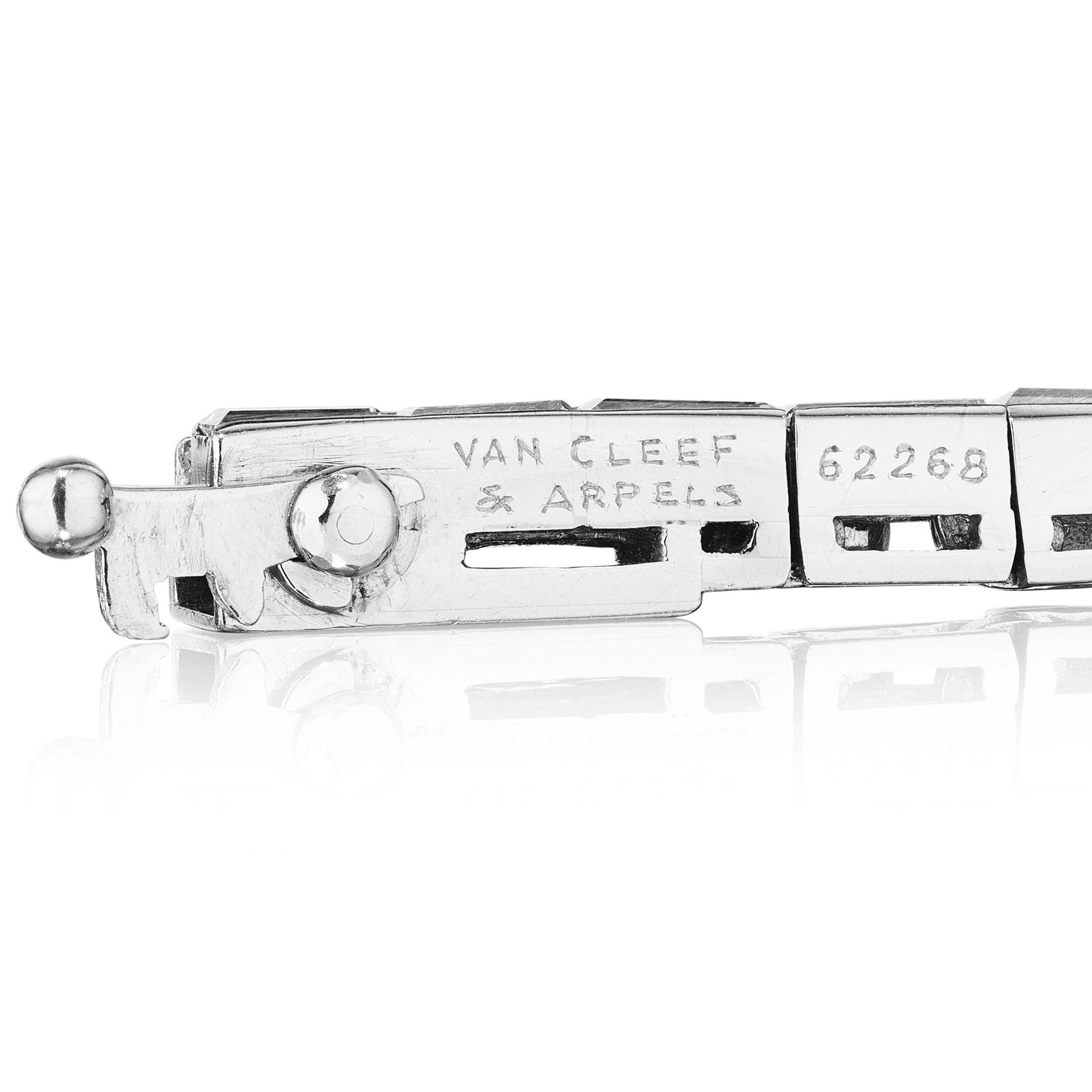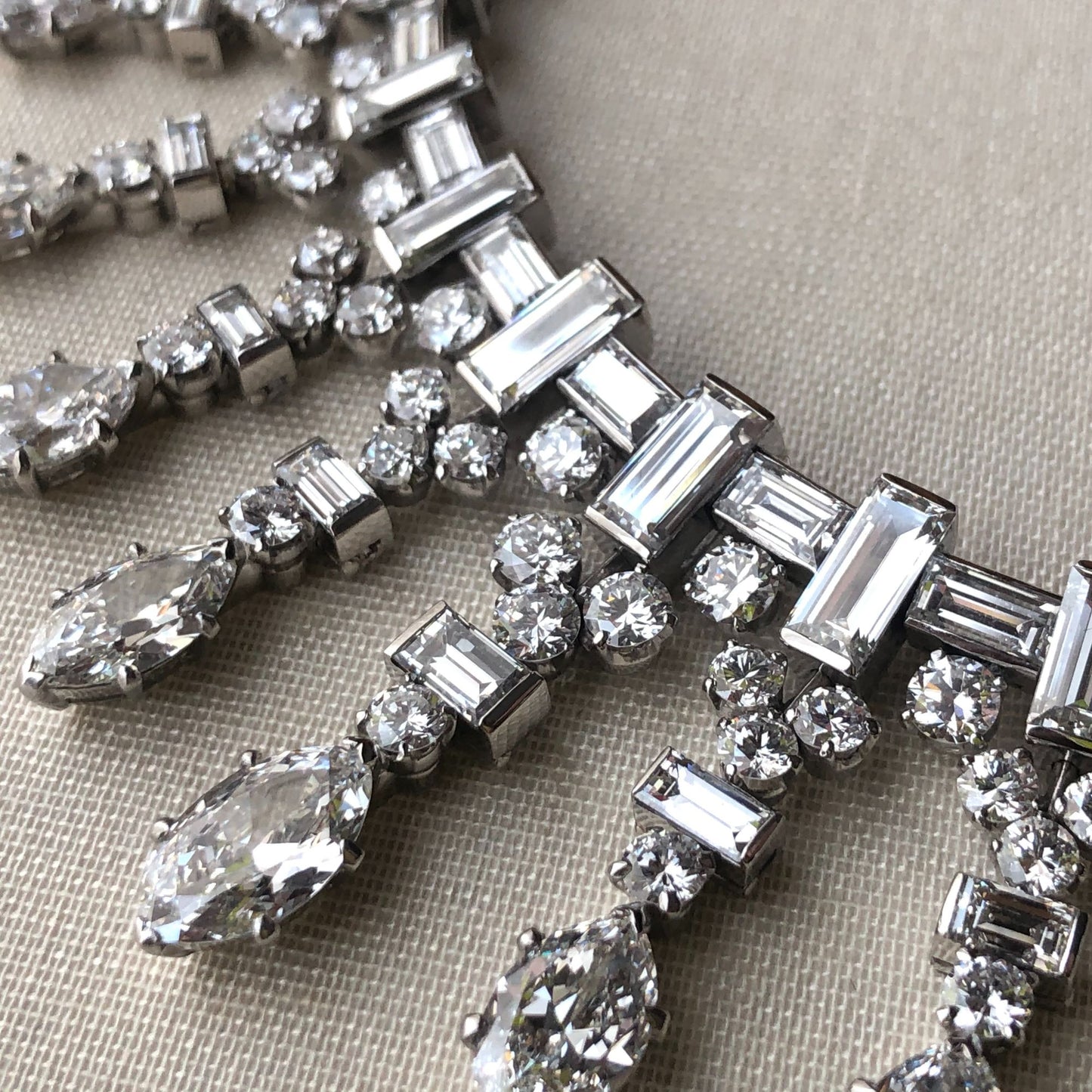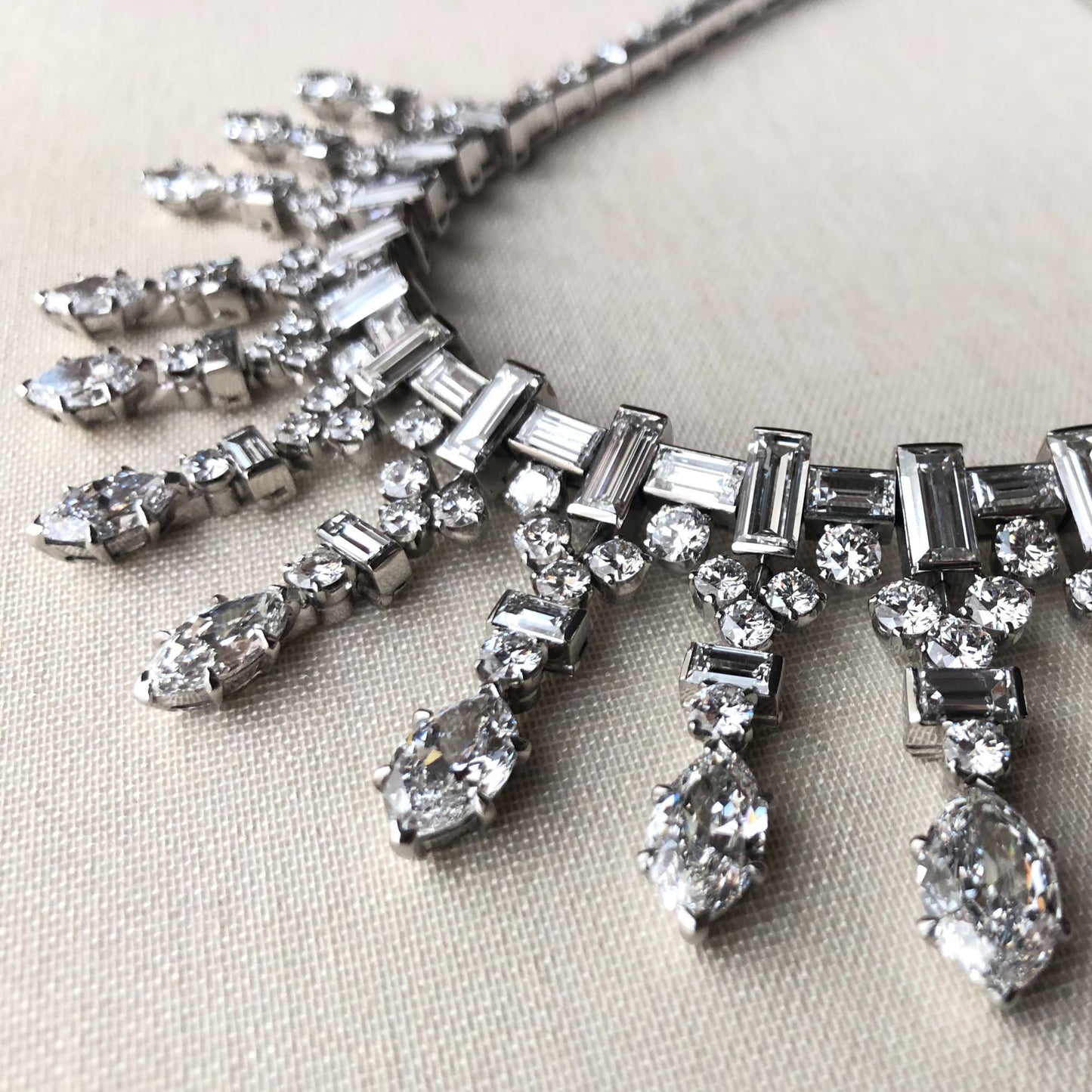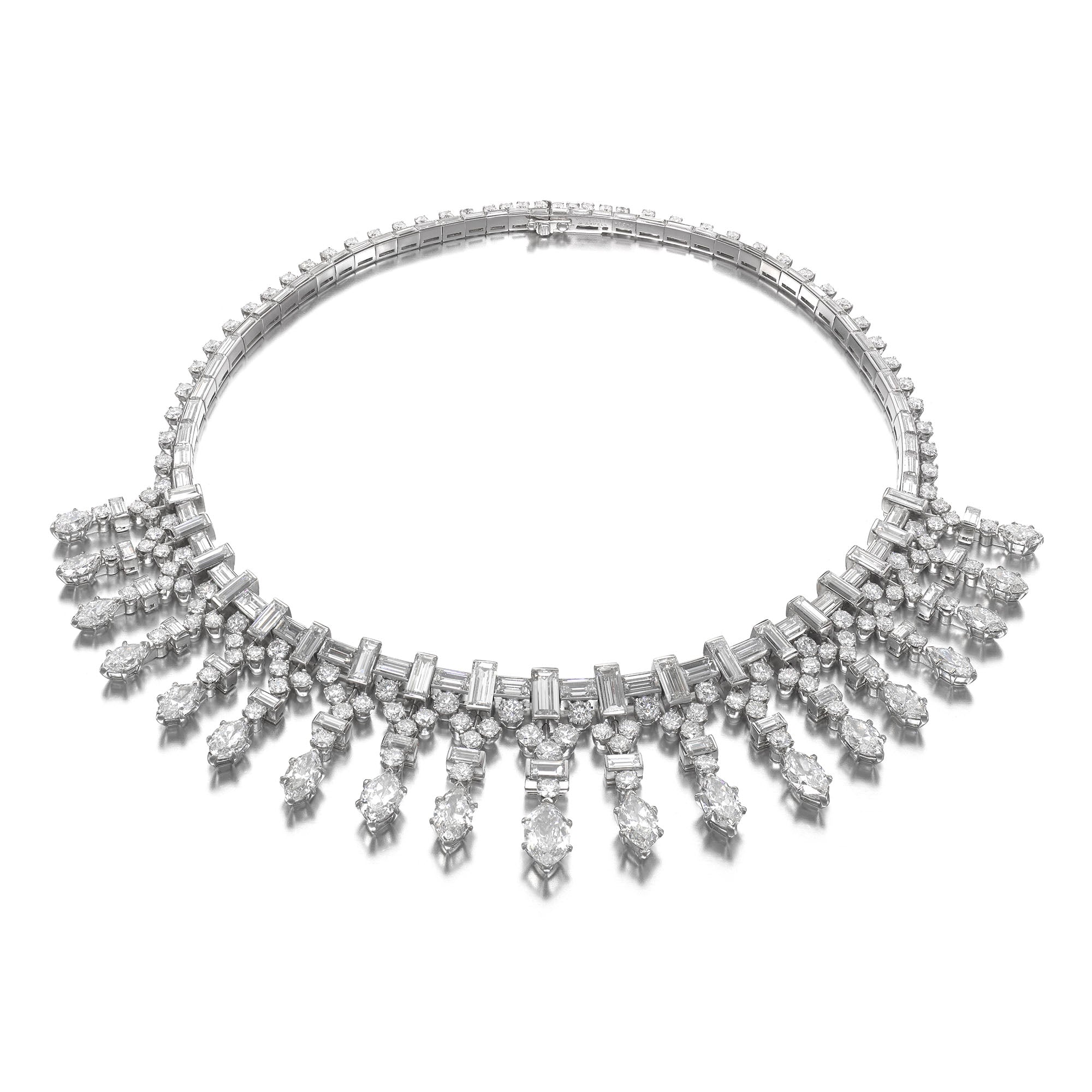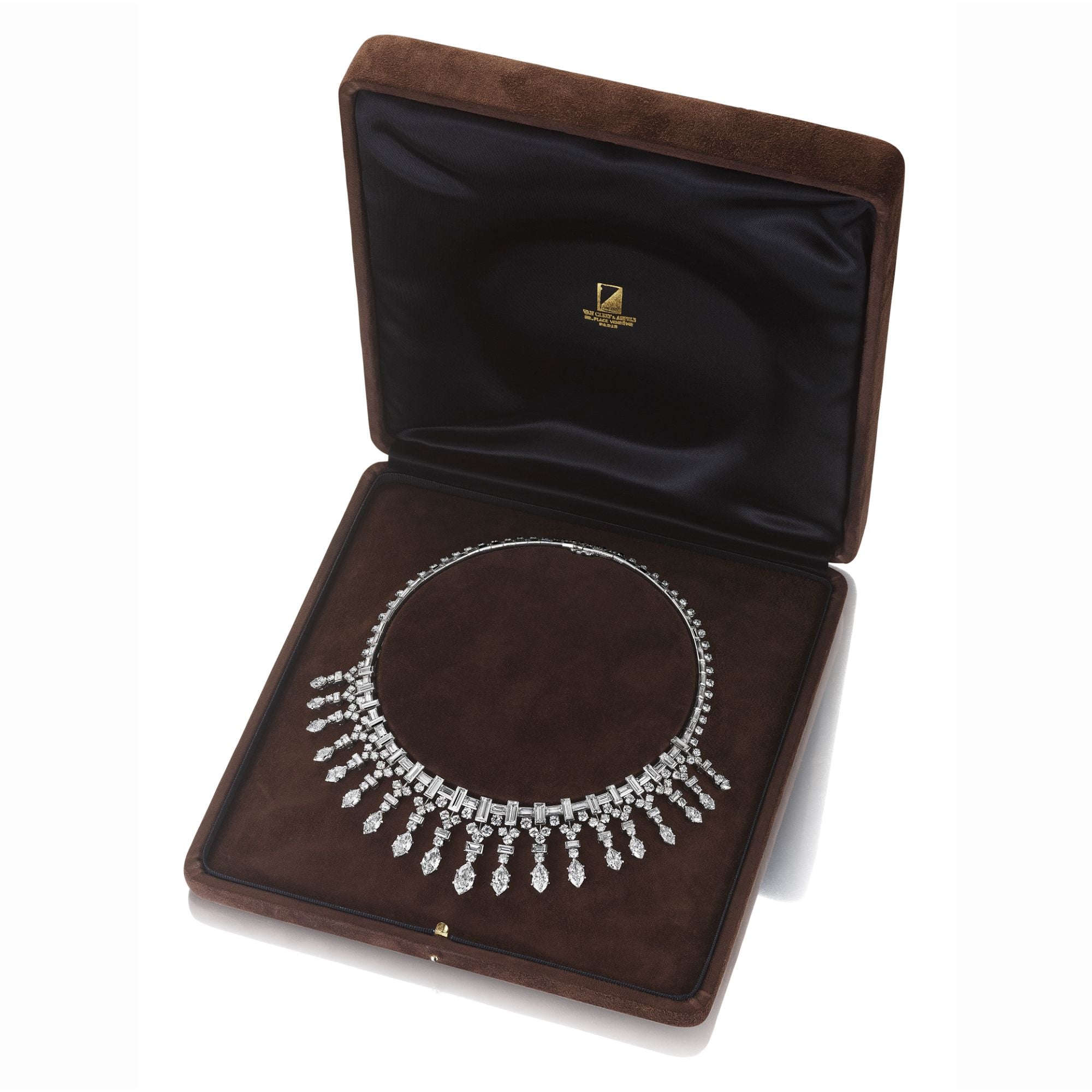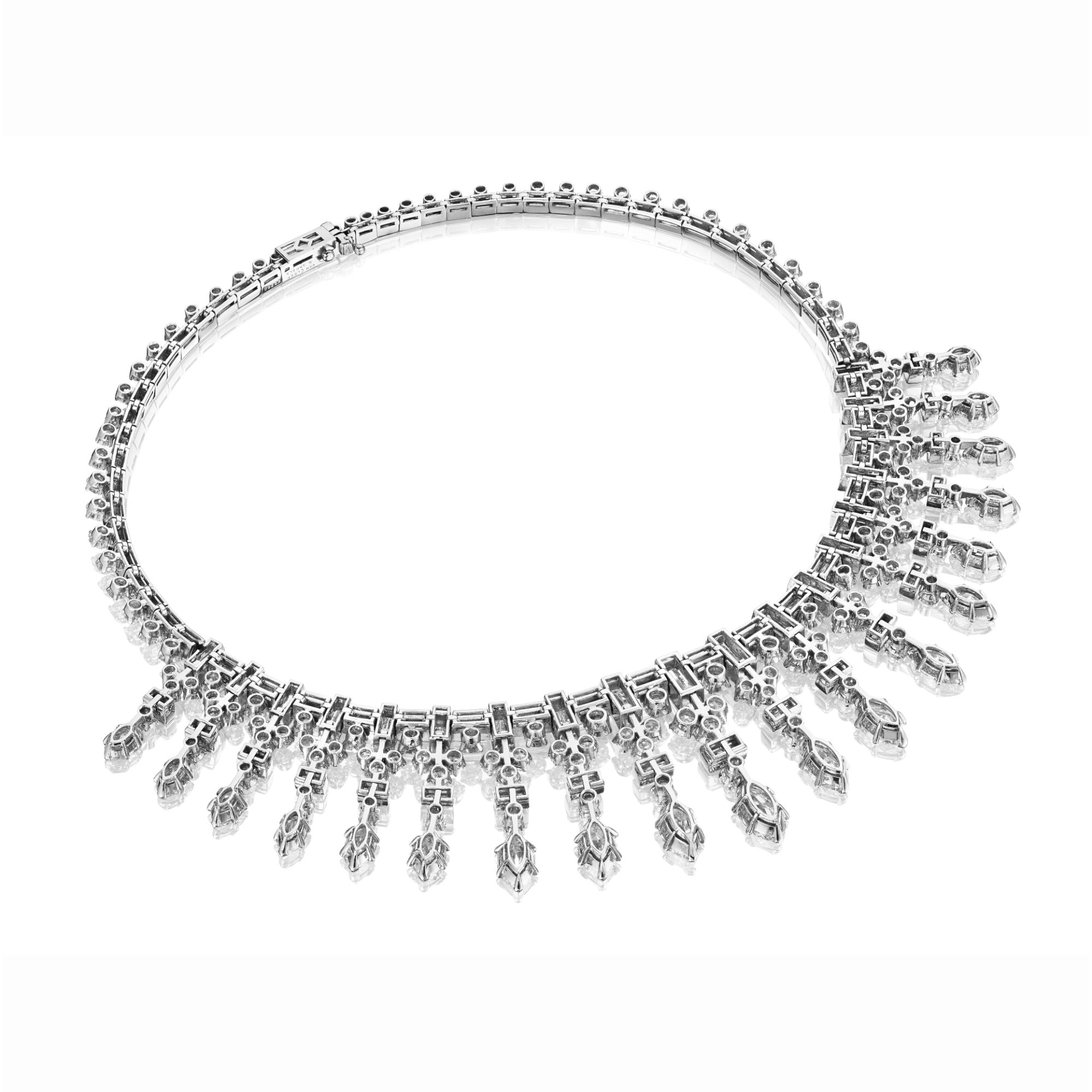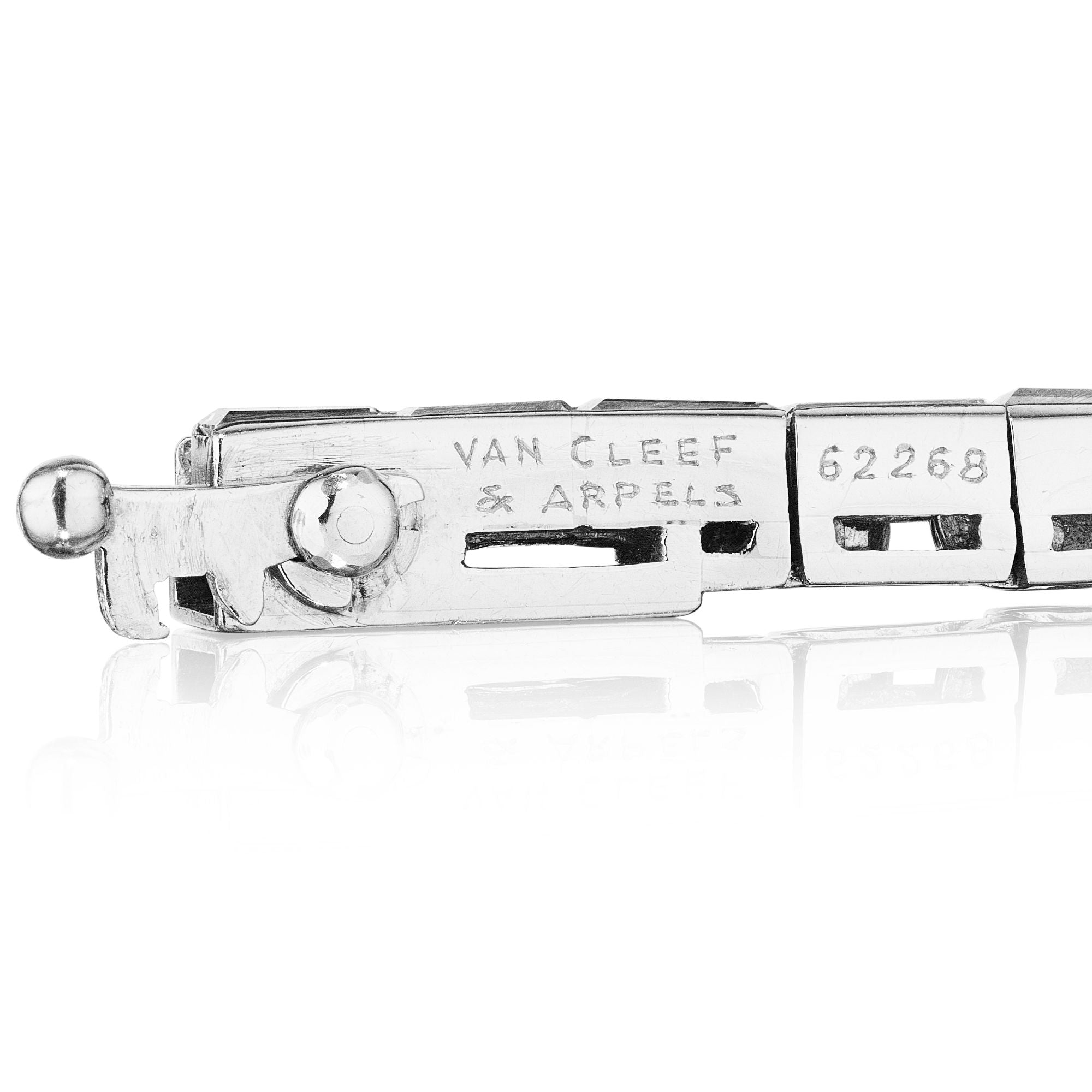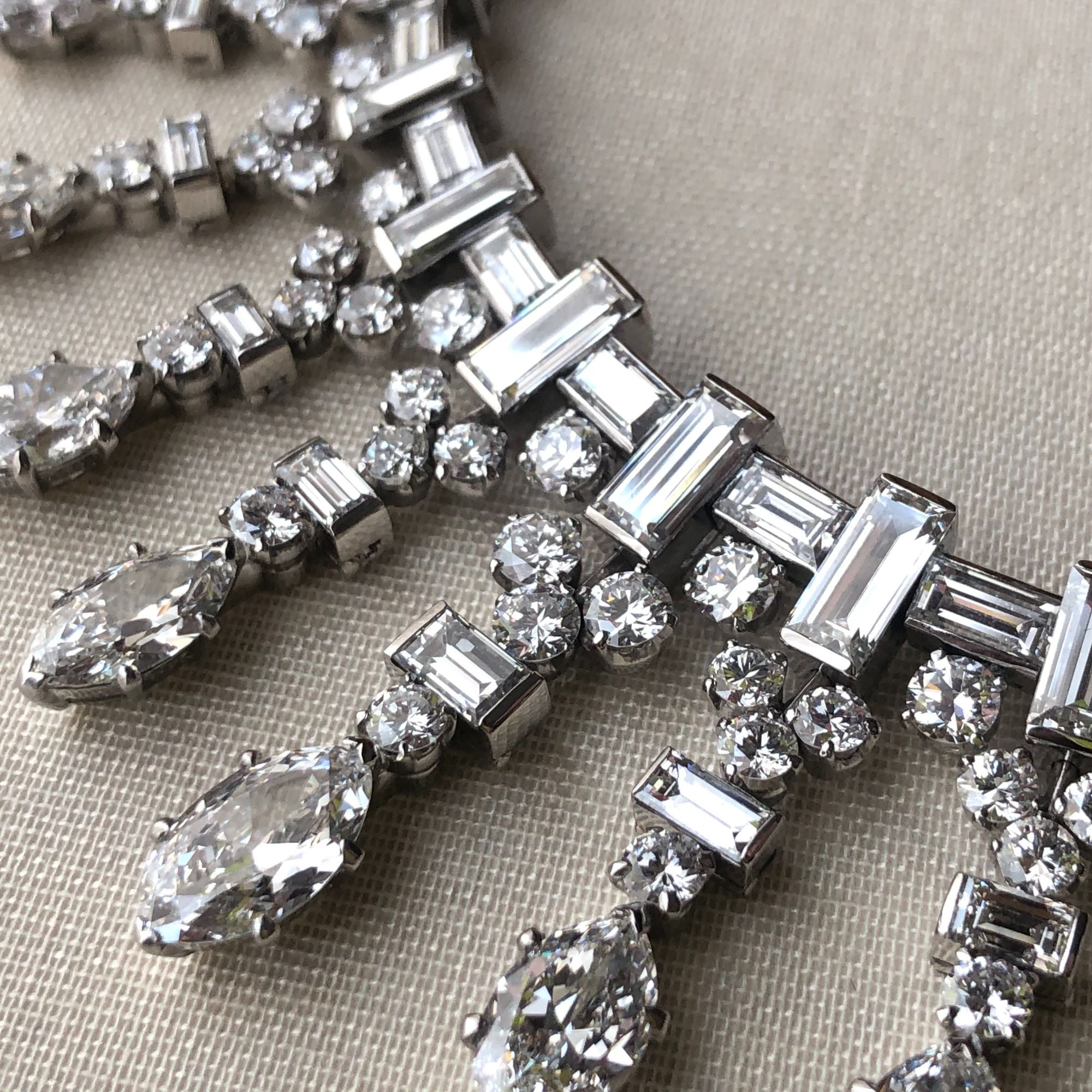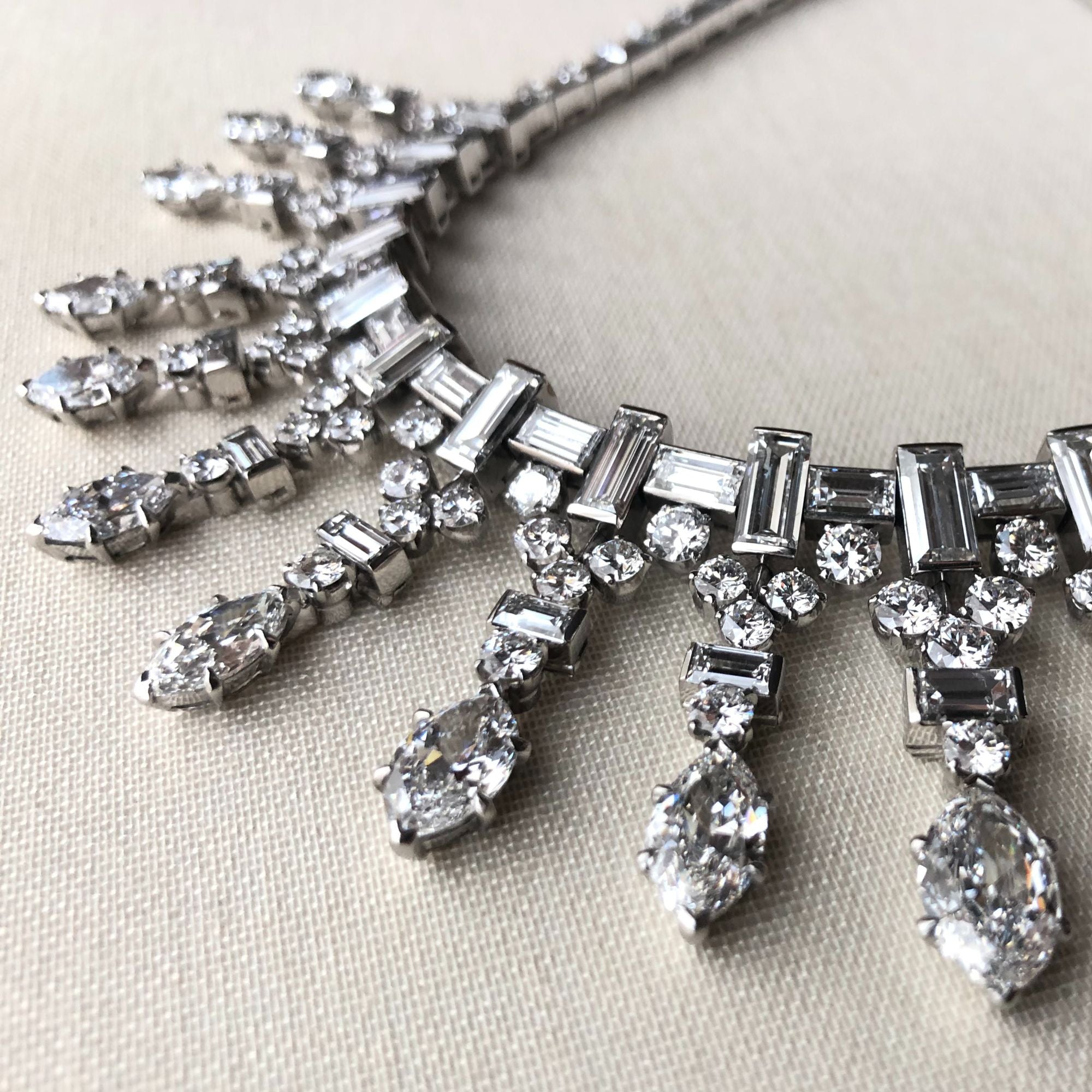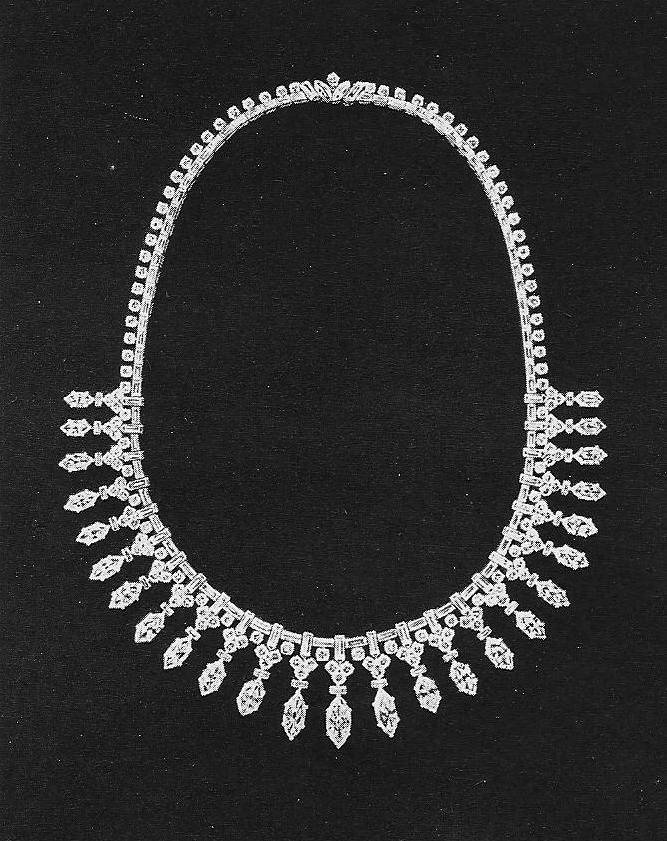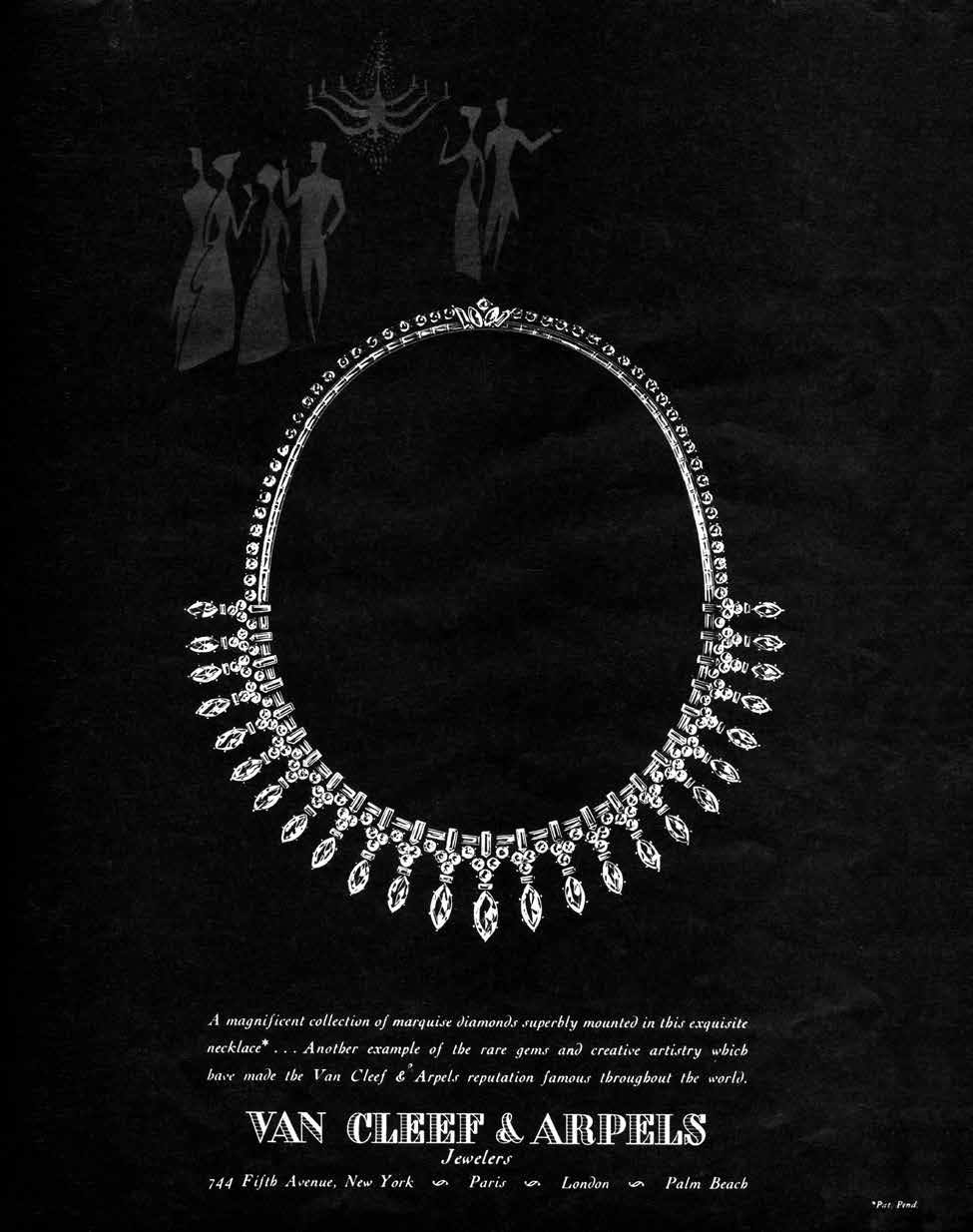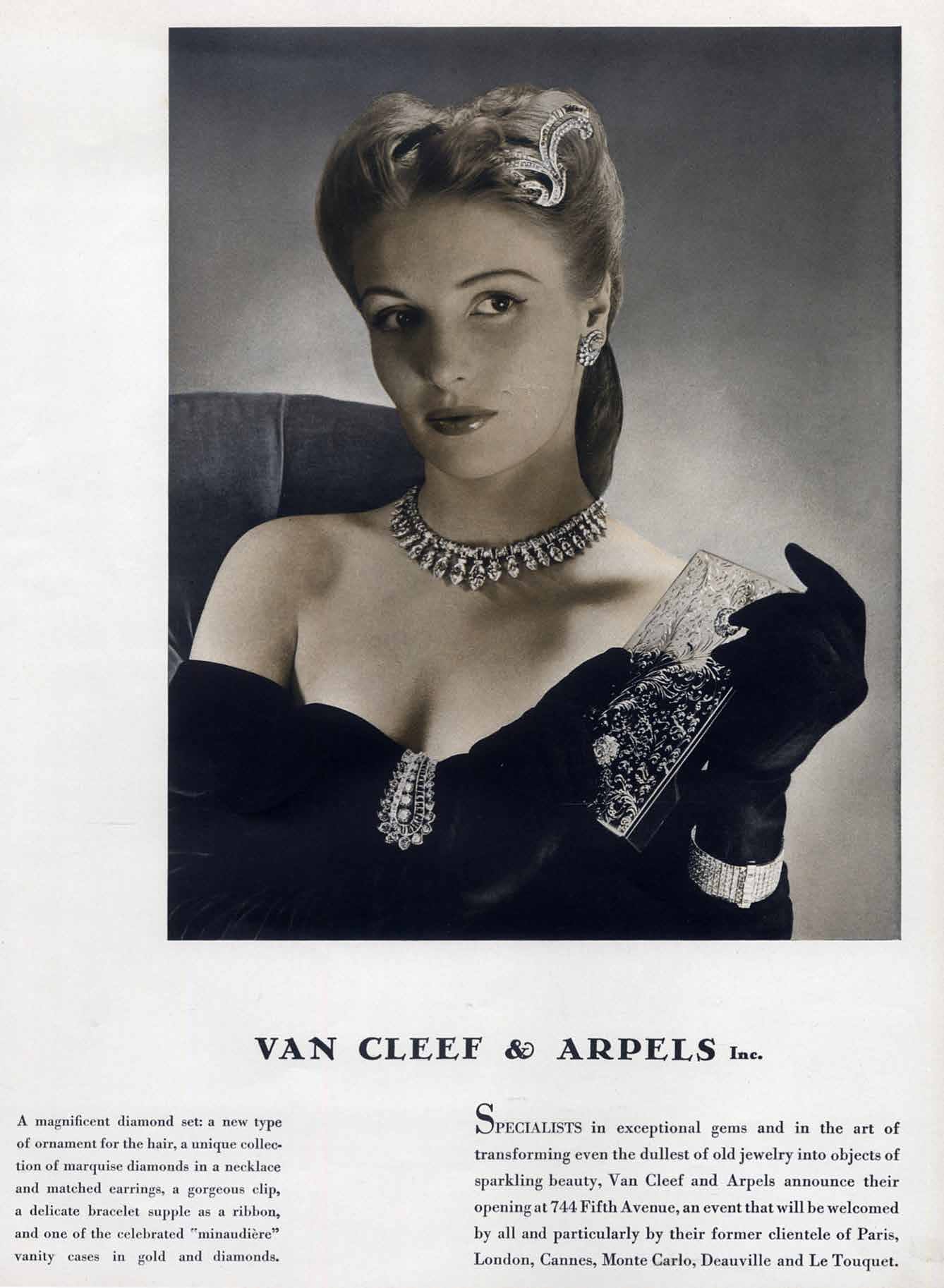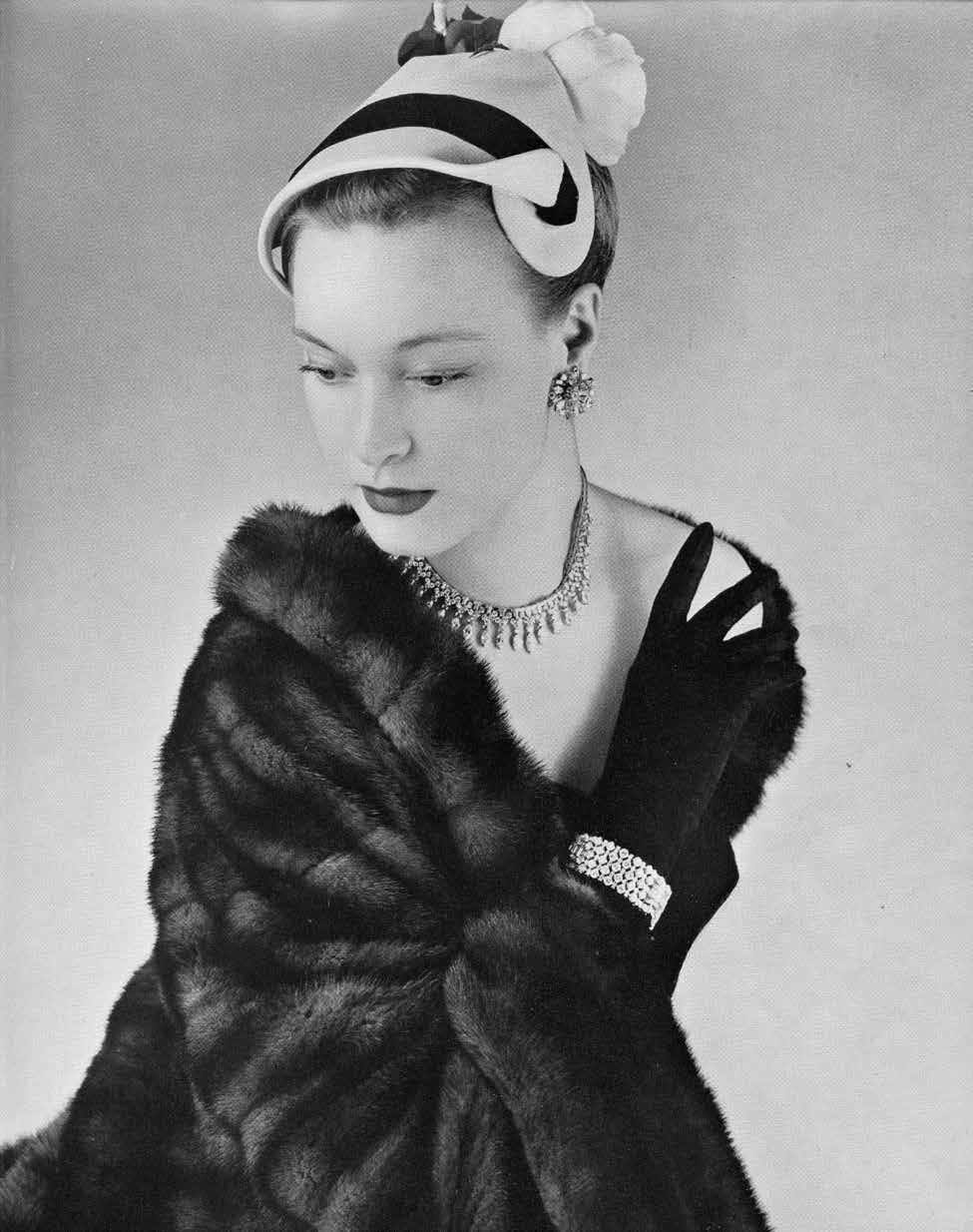PLATINUM AND DIAMOND NECKLACE BY VAN CLEEF & ARPELS, PARIS, 1948
PLATINUM AND DIAMOND NECKLACE BY VAN CLEEF & ARPELS, PARIS, 1948
A diamond and platinum necklace with a graduating fringe of nineteen round, baguette, and marquise diamonds suspended from a neck chain of baguette and brilliant-cut diamonds; mounted in platinum with French assay marks
- 19 marquise-cut diamonds, weighing 19.51 carats
- 140 round diamonds, weighing 16.41 carats
- 100 baguette-cut diamonds, weighing 30.34 carats
- Signed Van Cleef & Arpels, stamped 62268. The setting of each marquise diamond is engraved with the weight of the stone.
- Length: 15 inches
Additional cataloguing
Certification
Gemological Institute of America Diamond Grading Report, dated May 27, 2011, stating that the 1.58-carat marquise brilliant is E color and VS1 clarity.
Gemological Institute of America Diamond Grading Report, dated May 27, 2011, stating the 1.28-carat oval brilliant is F color and VS2 clarity.
Gemological Institute of America Diamond Grading Report, dated May 27, 2011, stating the 1.71-carat oval brilliant is F color and VS2 clarity.
Literature
cf. Vogue, September 15, 1946, p. 182.
cf. Van Cleef & Arpels Joailliers (promotional folder), c. 1948, no. 3.
Biography
Van Cleef & Arpels was founded in 1906 by Alfred Van Cleef and his two brothers-in-law, Charles and Julian Arpels, at 22 Place Vendôme, Paris. Their important design innovations include the invisible setting, the minaudière and the Zip necklace. In 1939, they opened an office in Rockefeller Center in New York, moving three years later to 744 Fifth Avenue where they are today. Their impressive client list includes royalty, socialites, and Hollywood stars such as Jackie Kennedy, Princess Grace, Liz Taylor, and the Duchess of Windsor. In 1999, Van Cleef & Arpels became part of the Richemont Group. They have locations in the Americas, Europe, and Asia.
Significance
The end of World War II heralded a return to normalcy with Paris quickly returning to a city of business and fashion. Couturiers introduced new fashions that were in contrast to the unadorned clothing of the war. In 1947, Christian Dior presented The New Look that featured a small waist and full skirts that fell to mid calf. Women assumed a new ladylike charm, emulating screen stars such as Marlene Dietrich and Rita Hayworth. New styles precipitated a change in jewelry design and, with restrictions from the war no longer in effect, precious gemstones replaced citrines, amethysts, and aquamarines.
The lack of precious gemstones during the war years was succeeded by the return of sumptuous jewels in the post-war years. Diamonds were once again available and designers created magnificent necklaces that rivaled the great examples from the nineteenth and early twentieth centuries. Van Cleef & Arpels was quick to accede to this new demand, designing jewelry in which the gemstones dictated the style of the composition. Created in 1948, this necklace is an adaptation of a bib necklace with a row of baguette diamonds suspending pendants with baguette, round, and marquise diamonds. It complemented the silk, lace, and brocade evening gowns of The New Look.
Van Cleef & Arpels featured a similar necklace in a Vogue advertisement, September 15, 1946, noting that there was a patent pending. Van Cleef & Arpels considered the necklace so unique that they sought to restrict others from emulating what they had created. This necklace is truly a work of art both in design and craftsmanship. It is just as wearable with today’s fashions as when it accessorized Dior’s creations over sixty years ago.
